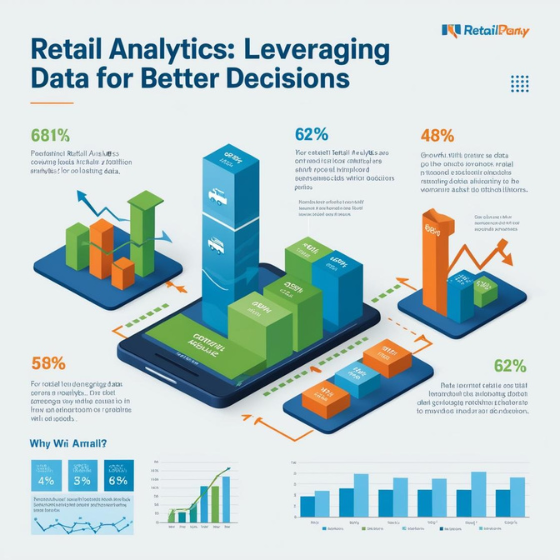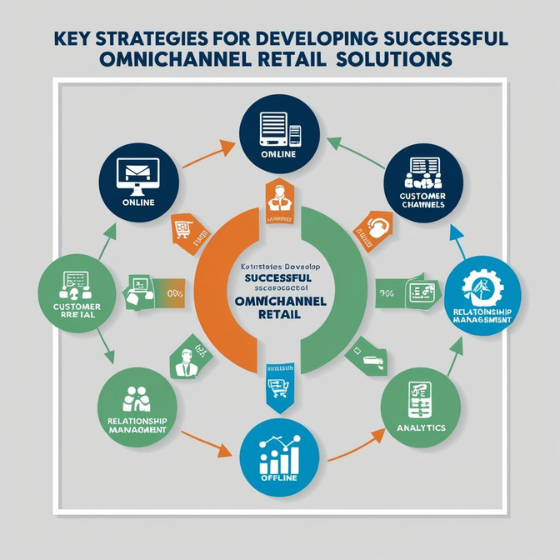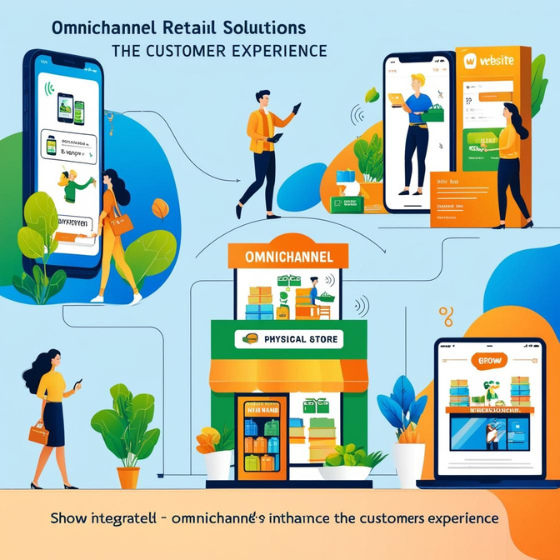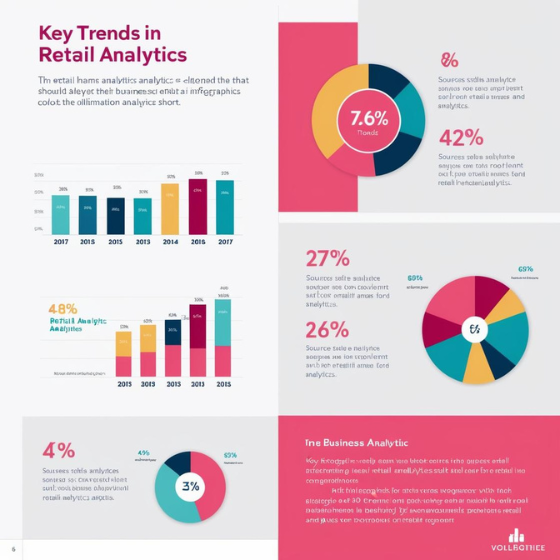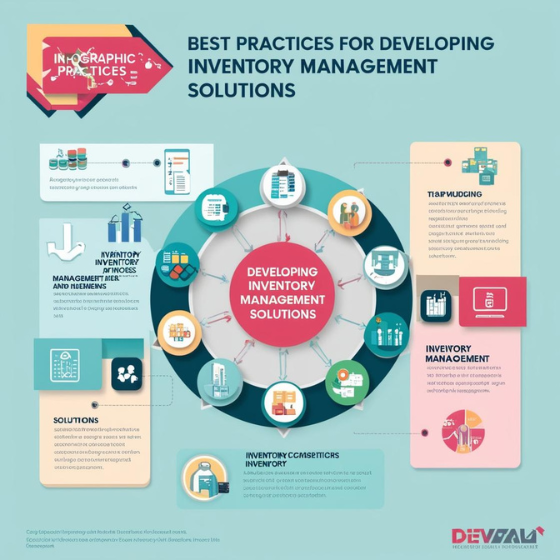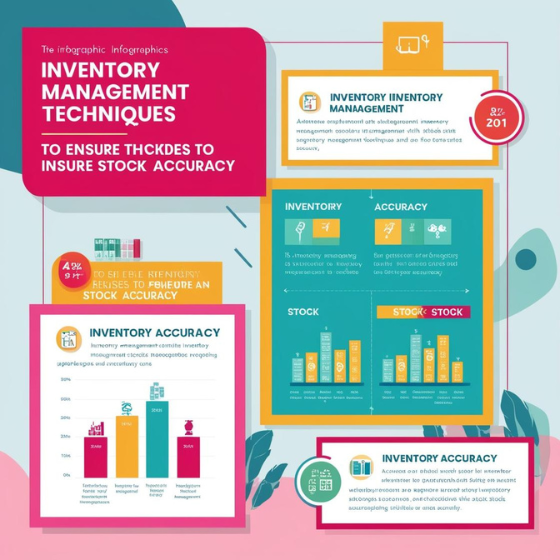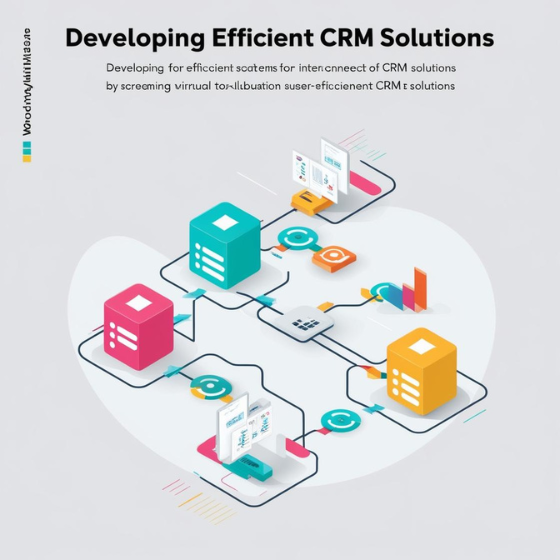Introduction
In today’s fast-paced retail environment, businesses need to stay ahead of the curve to meet customer expectations and maximize profits. Did you know that 91% of leading retail companies use data analytics to drive business decisions? With the power of retail analytics, companies can harness customer insights, sales trends, and operational data to make smarter, more informed decisions.
In this blog, we will explore how retail analytics can help businesses improve decision-making, optimize operations, and ultimately enhance customer satisfaction. Whether you’re a small shop or a global retailer, the ability to effectively analyze and use data is crucial for success.
What is Retail Analytics?
Retail analytics refers to the use of data to analyze trends, behaviors, and performance metrics within the retail sector. It helps businesses identify patterns, predict future trends, and make data-driven decisions across areas like inventory management, pricing, sales, and customer engagement.
By gathering and interpreting data from various sources—such as sales transactions, customer feedback, online behavior, and supply chain information—retailers can uncover valuable insights that drive business success.
Why Retail Analytics Matters
With the rise of e-commerce and digital technologies, traditional retail strategies are no longer enough to stay competitive. Here are some key reasons why retail analytics is vital for modern businesses:
1. Optimizes Inventory Management
Accurate inventory management is a critical component of retail success. Retail analytics can provide real-time insights into stock levels, sales patterns, and customer demand, helping businesses maintain the right amount of stock without overstocking or running out of popular items.
- Predict Demand: Predict trends and seasonality with historical sales data.
- Reduce Stockouts and Overstocking: Make data-driven decisions about when to reorder products and how much stock to keep.
2. Enhances Customer Experience
Understanding customer preferences is key to providing a personalized shopping experience. Retail analytics tools allow businesses to segment customers based on purchasing behavior, demographics, and other key factors, enabling tailored marketing and product offerings.
- Customer Segmentation: Categorize customers into meaningful groups to provide relevant promotions and offers.
- Personalized Recommendations: Leverage customer data to recommend products based on past purchases or browsing history.
3. Informs Pricing Strategies
Pricing is one of the most powerful levers in retail. With the help of retail analytics, businesses can monitor competitor prices, analyze sales performance, and identify the optimal price points for each product.
- Dynamic Pricing: Adjust prices in real-time based on demand, inventory levels, or competitor pricing.
- Profit Maximization: Identify price elasticity and adjust pricing to maximize revenue.
4. Improves Marketing Effectiveness
Data-driven marketing campaigns can significantly improve customer engagement and conversion rates. With retail analytics, businesses can measure the effectiveness of marketing efforts, track ROI, and refine strategies for better performance.
- Campaign Performance: Analyze the success of advertising and promotional campaigns.
- Customer Insights: Use data to understand customer behavior, allowing for more targeted and effective marketing.
5. Streamlines Supply Chain Operations
Efficient supply chain management is essential for retail success. Retail analytics helps optimize the movement of goods from suppliers to stores, ensuring that products arrive on time and in the right quantities.
- Optimize Logistics: Use data to track inventory movement and reduce delays or inefficiencies.
- Improve Supplier Relationships: Gain insights into supplier performance to improve negotiations and forecasting.
Best Practices for Leveraging Retail Analytics
To fully capitalize on retail analytics, businesses must follow certain best practices to ensure that they are collecting, analyzing, and applying data in the most effective way. Here are some key strategies to get started:
1. Invest in the Right Tools and Technology
The foundation of effective retail analytics is having the right tools. Investing in a comprehensive analytics platform that integrates with your sales, inventory, and customer data will help you gain valuable insights. Some popular retail analytics tools include Google Analytics, Tableau, and Power BI.
- Automation: Use automated reporting and dashboards to save time and ensure consistent data analysis.
- Real-Time Insights: Ensure your platform provides real-time data so you can make timely decisions.
2. Focus on Data Quality
The accuracy of your data is crucial for making informed decisions. It’s essential to collect clean, accurate, and relevant data to ensure your insights are reliable.
- Data Cleaning: Regularly clean and validate your data to remove duplicates, errors, or outdated information.
- Integrate Multiple Data Sources: Combine data from various sources (e.g., in-store sales, online behavior, social media) to get a holistic view of your business.
3. Encourage a Data-Driven Culture
To truly leverage retail analytics, it’s important to build a culture where data-driven decision-making is embraced across the organization. Empower your team with the tools and training to understand and interpret data insights effectively.
- Cross-Department Collaboration: Encourage collaboration between marketing, sales, operations, and supply chain teams to make the most of the insights derived from data.
- Continuous Training: Provide regular training to staff on how to interpret and use analytics to make better decisions.
4. Use Predictive Analytics
Predictive analytics uses historical data to forecast future trends, demand patterns, and customer behavior. Retailers can leverage predictive analytics to stay ahead of trends and make proactive decisions.
- Forecast Demand: Use historical sales data to predict future demand and plan inventory accordingly.
- Anticipate Customer Needs: Understand seasonal trends and adjust marketing strategies or stock levels to meet demand.
5. Monitor and Adjust Regularly
The retail environment is constantly changing, and so are consumer preferences. It’s important to monitor your analytics regularly and adjust your strategies to reflect the latest trends.
- Monitor KPIs: Keep an eye on key performance indicators such as sales growth, conversion rates, and customer satisfaction.
- Adjust Strategies: Be ready to pivot your approach based on new insights or changing market conditions.
How Retail Analytics Drives Business Success: Real-World Examples
Case Study 1: Improved Inventory Management
A leading fashion retailer implemented retail analytics to monitor sales trends and customer preferences. By using predictive analytics, they were able to optimize inventory levels, reduce stockouts by 30%, and cut excess inventory costs by 25%. This improved both their bottom line and customer satisfaction.
Case Study 2: Personalized Customer Experiences
An e-commerce company used customer segmentation and behavioral data to personalize recommendations and marketing offers. As a result, they saw a 40% increase in conversion rates and a significant boost in customer loyalty.
Conclusion
Retail analytics is a game-changer for businesses looking to optimize operations, improve customer experience, and make data-driven decisions. From inventory management to pricing strategies and personalized marketing, the insights derived from data can help retailers stay competitive in an ever-changing market.
By investing in the right tools, focusing on data quality, and fostering a data-driven culture, businesses can unlock the full potential of retail analytics. At Sodio, we specialize in developing customized solutions to help businesses harness the power of data for better decision-making. Contact us today to learn how we can help you optimize your retail analytics strategy.
Ready to leverage retail analytics to boost your business performance? Get in touch with Sodio to explore our data-driven solutions and start making smarter decisions today!
